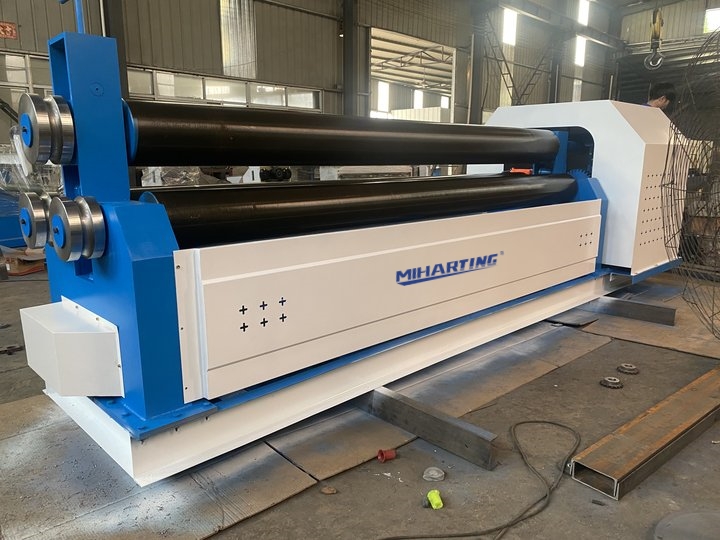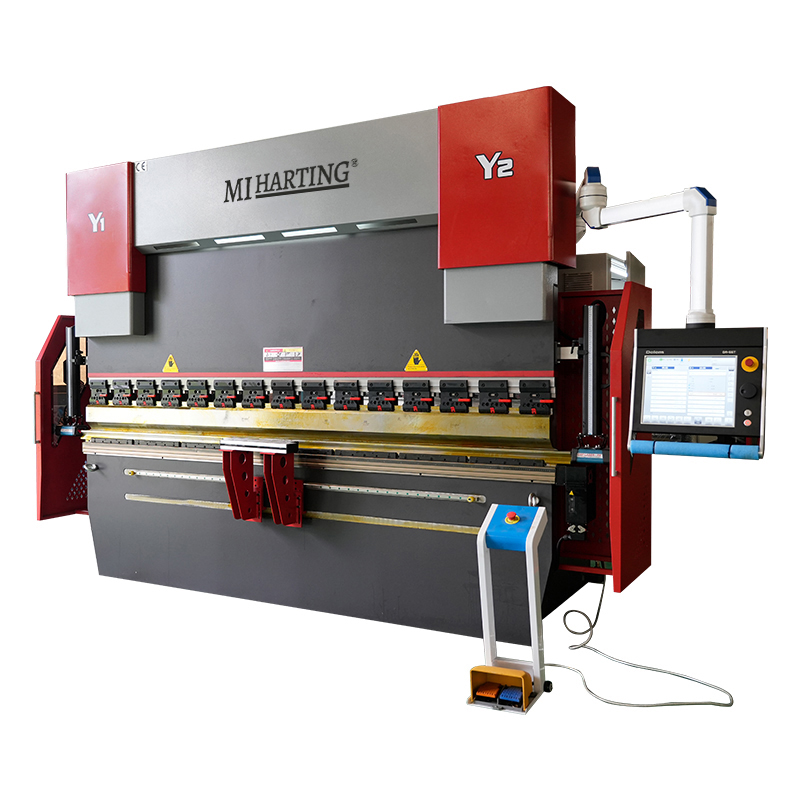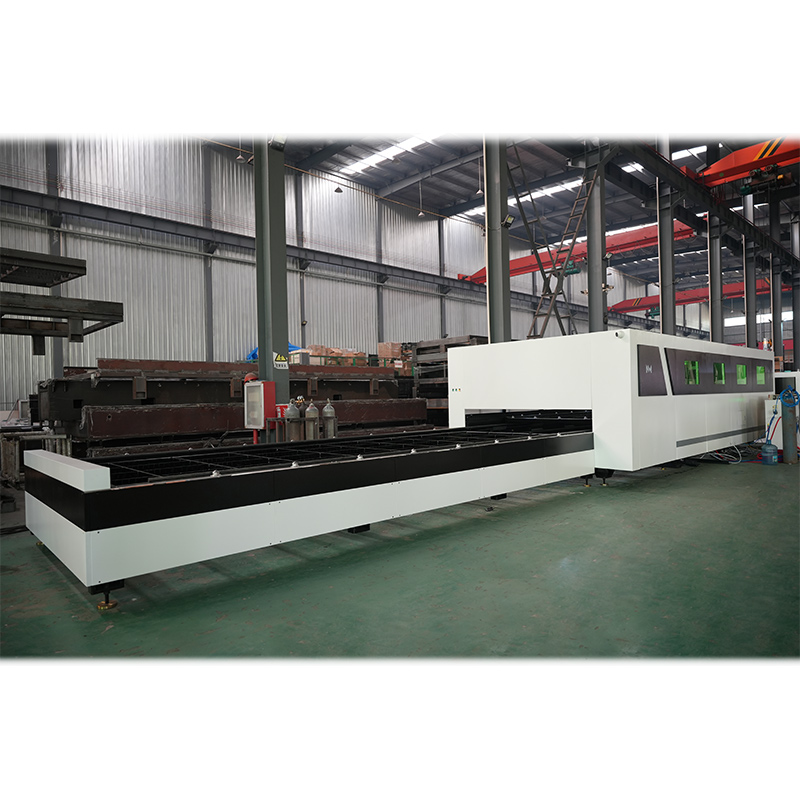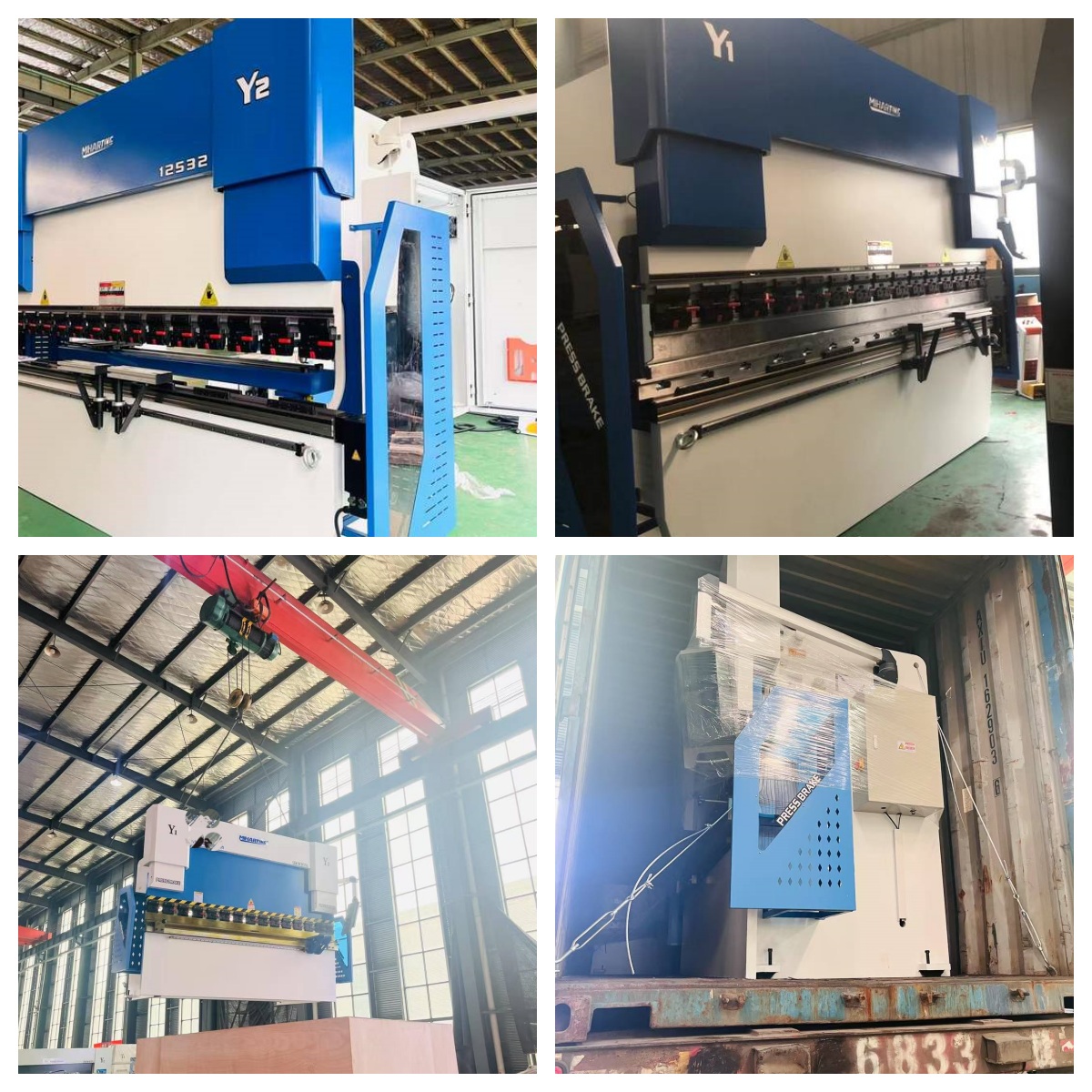Welcome to The Ultimate Guide to Laser Cutting Models! In modern manufacturing, laser cutting machines play a vital role. They revolutionize materials processing through their highly precise cutting and engraving capabilities. This guide will give you an in-depth look at the different types of laser cutting machines, including CO2 lasers, fiber lasers and semiconductor lasers, and their application areas in various industries. Whether you're a beginner or a professional, with this guide you'll gain a comprehensive understanding of how to choose the right laser cutter for your needs and stay on top of the latest innovations.
A laser cutting machine is a precision tool that uses a high-powered laser beam to cut and engrave materials. It offers exceptional accuracy, speed, and versatility, making it ideal for various industries. The laser beam melts or vaporizes the material, creating precise cuts without the need for physical contact or excessive heat, resulting in clean edges and intricate designs.
Key components of laser cutting machine:
- 1.Laser: The laser source provides a concentrated beam of light, typically generated by using either a carbon dioxide (CO2) laser or a fiber laser. The laser emits a high-energy beam of coherent light used for cutting the material.
- 2.Optical system: This system includes mirrors and lenses that help direct and focus the laser beam onto the workpiece. It ensures precise and controlled delivery of the laser energy.
- 3.Control system: The control system comprises both hardware and software components responsible for controlling the overall operation of the laser cutting machine. It includes a controller, motion control system, interface, and software to program and control the cutting process.
- 4.Cutting bed: The cutting bed provides a stable and flat surface on which the workpiece is placed during the cutting process. It helps in positioning and securing the material and allows for efficient cutting.
- 5.Workpiece support: In some laser cutting machines, a workpiece support system is used to hold the material in place during cutting. It may use clamps, suction, or other methods to keep the workpiece stationary and prevent vibrations.
- 6.Assist gas system: An assist gas (commonly compressed air, nitrogen, or oxygen) is used to blow away molten metal or debris from the cut, improving the overall cutting quality. The assist gas system typically includes gas tanks, filters, and nozzles.
- 7.Exhaust system: The exhaust system is responsible for removing fumes, smoke, and particulates generated during the cutting process. It helps maintain a clean working environment and ensures the safety of the operator.
- 8.Cooling system: Laser cutting generates a significant amount of heat that needs to be dissipated. The cooling system, which usually includes a chiller or water cooling system, helps maintain optimal laser and machine temperature to prevent overheating.
- 9.Safety features: Laser cutting machines incorporate various safety features, such as emergency stop buttons, door interlocks, and protective enclosures, to ensure the operator's safety during operation.
Application & importance of laser cutting machine:
Laser cutting machines are used in various industries for precise and efficient material cutting. Their applications range from metal fabrication, such as cutting and shaping sheets, tubes, and profiles, to manufacturing sectors like automotive, aerospace, electronics, and furniture. The key importance of laser cutting machines lies in their high precision, versatility, speed, and ability to cut a wide range of materials with minimal heat-affected zones. They enable complex designs, eliminate the need for tooling, and offer increased productivity, making them essential tools for modern manufacturing processes.
Considerations for choosing a laser cutting machine:
When choosing a laser cutting machine, consider the following factors:
- 1.Power and cutting capabilities: Determine the required power level and cutting thickness to ensure the machine can handle your intended materials and cutting depth.
- 2.Bed size: Consider the maximum size of the workpiece you'll be cutting to ensure it fits on the machine's bed.
- 3.Laser type: Decide between CO2 or fiber lasers based on the materials you'll be cutting. CO2 lasers are versatile and can cut a wide range of materials, while fiber lasers excel at cutting metals.
- 4.Cutting speed and precision: Evaluate the machine's speed and accuracy to ensure it meets your production needs, especially if you have specific tolerances or a high-volume workload.
- 5.Support and service: Research the manufacturer's reputation for customer service and technical support, as well as the availability of spare parts and maintenance requirements.
- 6.Software compatibility: Check if the machine's software is compatible with the design software you use, allowing for seamless integration and efficient workflow.
- 7.Safety features: Look for safety mechanisms like protective enclosures, interlock systems, and emergency stop buttons to ensure the operator's safety.
- 8.Budget and cost of ownership: Consider the initial cost of the machine, as well as ongoing expenses like maintenance, replacement parts, and operational costs like electricity and gas.
- 9.User-friendly interface: Evaluate the ease of use and accessibility of the machine's interface, considering features like touchscreen controls and intuitive software.
- 10.Reviews and recommendations: Read customer reviews and seek recommendations from industry professionals to gain insights from those who have used the machine.
Working principle of laser cutting machine:
A laser cutting machine operates based on the principle of using a highly focused beam of light, known as a laser, to cut materials with precision and accuracy. Here is a detailed description of its working principle:
- 1.Laser Generation: The laser cutting machine starts by generating a laser beam using a laser resonator. This resonator contains a gas mixture, such as carbon dioxide (CO2), nitrogen (N2), and helium (He), which, when energized, produces a highly concentrated beam of light.
- 2.Beam Amplification: The laser beam is then amplified within the resonator by passing it through a series of mirrors and lenses. These optical devices intensify the laser's power, increasing its energy density and enabling high cutting speeds.
- 3.Beam Delivery System: The amplified laser beam is delivered from the resonator to the cutting head through a beam delivery system. This system typically consists of mirrors and fiber optics, which help guide and direct the laser beam to the desired cutting location.
- 4.Material Interaction: When the laser beam reaches the cutting head, it is focused into a small spot size, ranging from a few micrometers to a few millimeters, depending on the application. The focused laser beam is then directed onto the material to be cut, which could be metal, wood, plastic, or various other materials.
- 5.Material Absorption: The material being cut absorbs the energy of the laser beam. This energy is converted into heat, causing the material to melt, vaporize, or undergo a process known as thermal stress cracking. Different materials respond differently to the laser beam, and adjustments can be made to the beam's power and speed to optimize the cutting process for each material.
- 6.Cutting Process: As the laser beam interacts with the material, it moves along the desired cutting path. The focused laser beam acts as a high-energy heat source that effectively melts or vaporizes the material within a narrow region. As the laser continues to move, it creates a kerf (cutting groove) through the material, separating it into two distinct pieces.
- 7.Gas Assist and Removal: To improve the cutting process and remove molten material, a gas assist system is often used. This system blows a gas, typically compressed air or nitrogen, onto the cutting area, helping to remove debris and prevent the accumulation of molten material. Gas can also prevent oxidation reactions and enhance the edge quality of the cut.
- 8.CNC Control: Laser cutting machines are usually equipped with computer numeric control (CNC) systems. These systems use specialized software to precisely control the movement of the laser beam and the cutting head. The CNC system takes input from CAD/CAM software, allowing for highly accurate and complex cutting patterns.
HANDHELD LASER WELDING MACHINE:
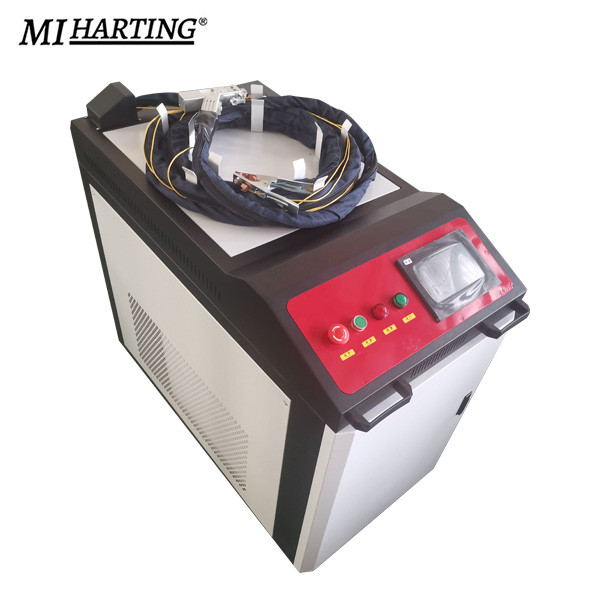
Advantages:
- 1.Portability: Handheld laser welding machines are compact and lightweight, making them easy to carry and operate in various locations. They offer flexibility and convenience for on-site welding tasks.
- 2.Precision: Laser welding technology provides high precision and accuracy, allowing for precise control of the welding process. It results in clean and aesthetically pleasing welds with minimal distortion.
- 3.Efficiency: Handheld laser welding machines have a fast welding speed and high deposition rates compared to traditional welding methods. They can significantly reduce welding time, increasing overall productivity.
- 4.Versatility: These machines can weld a wide range of materials, including stainless steel, aluminum, titanium, copper, and even dissimilar metals. They can be used in various industries, including automotive, aerospace, electronics, and jewelry.
Applications:
- 1.Automotive Industry: Handheld laser welding machines are used for repairs, modifications, and manufacturing processes in the automotive industry. They can weld car body parts, exhaust systems, fuel tanks, and more.
- 2.Jewelry Making: Precise and clean welds are essential in the jewelry industry. Handheld laser welding machines enable jewelers to perform intricate repairs, resizing, and creating complex designs.
- 3.Electronics Manufacturing: These machines find applications in electronics manufacturing, such as welding connectors, batteries, sensors, and printed circuit boards (PCBs).
- 4.Medical Equipment: Handheld laser welding machines are used in the production of medical devices, including implants, surgical tools, and dental equipment.
Precautions:
- 1.Eye Protection: Laser radiation can be harmful to the eyes. It is crucial to wear appropriate laser safety goggles or shields when operating a handheld laser welding machine.
- 2.Ventilation: Laser welding produces smoke, fumes, and vaporized metal particles. Adequate ventilation is necessary to maintain a safe working environment and prevent inhalation of hazardous substances.
- 3.Training and Certification: Proper training and certification are essential to operate a handheld laser welding machine safely and effectively. It is important to understand the equipment, its settings, and safety protocols.
- 4.Workpiece Preparation: Prior to welding, the workpieces should be properly cleaned and prepared to ensure quality welds. Any grease, dirt, or oxide layers should be removed for optimal welding results.
PLATE AND TUBE INTEGRATED LASER CUTTING MACHINE:

Advantages:
- 1.Versatility: A plate and tube integrated laser cutting machine combines the capabilities of both plate cutting and tube cutting into a single system. It offers versatility and flexibility to handle various cutting requirements.
- 2.Time and Cost Efficiency: Using a single machine for both plate and tube cutting eliminates the need for separate equipment, reducing investment costs and saving valuable floor space. It also streamlines the production process, increasing overall efficiency.
- 3.High Precision: Laser cutting technology provides high precision and accuracy, allowing for intricate and complex cutting patterns. It ensures clean and smooth cuts with minimal material wastage.
- 4.Automation and Productivity: Integrated laser cutting machines often come with advanced automation features such as robotic loading and unloading systems. This improves productivity by reducing manual labor and increasing uptime.
Applications:
- 1.Metal Fabrication: Plate and tube integrated laser cutting machines are widely used in the metal fabrication industry for cutting various materials like steel, stainless steel, aluminum, and brass. They can be used to create a wide range of products, including sheet metal parts, tubes, frames, and brackets.
- 2.Construction: These machines are employed in the construction industry for cutting metal components used in building structures, bridges, and infrastructure projects.
- 3.Automotive and Aerospace: Integrated laser cutting machines find applications in the automotive and aerospace sectors, where accurate and precise cutting is required to manufacture chassis, body panels, exhaust systems, and aircraft components.
- 4.Furniture Manufacturing: The ability to cut both plates and tubes makes these machines suitable for the furniture industry. They can be used to cut metal parts for chairs, tables, cabinets, and decorative elements.
Precautions:
- 1.Operator Safety: Laser cutting machines emit high-power laser beams that can be hazardous to the eyes and skin. Proper safety equipment, such as laser safety goggles and protective clothing, should be worn.
- 2.Ventilation: Laser cutting generates fumes, smoke, and particulate matter, which can be harmful if inhaled. Adequate ventilation systems should be in place to ensure a safe working environment.
- 3.Maintenance and Cleaning: Regular maintenance and cleaning of the machine are essential to maintain its performance and prolong its lifespan. This includes cleaning the lenses, checking the beam path, and ensuring proper alignment.
- 4.Material Handling: Care should be taken when handling and loading materials onto the machine. Sharp edges and heavy objects can pose hazards, so proper lifting techniques and equipment should be utilized.
LARGE SURROUND LASER CUTTING MACHINE:

Advantages:
- 1.Expanded Cutting Area: A large surround laser cutting machine offers a significantly larger cutting area compared to standard laser cutting machines. It allows for the processing of larger workpieces or multiple smaller pieces in a single operation, increasing production efficiency.
- 2.Flexibility: These machines can cut a wide range of materials, including various metals (steel, stainless steel, aluminum), plastics, wood, and more. They can be used in diverse industries such as automotive, aerospace, signage, furniture, and construction.
- 3.High Precision and Quality: Laser cutting technology provides excellent precision and accuracy, resulting in clean, smooth cuts without the need for secondary finishing operations. It ensures high-quality cuts with tight tolerances.
- 4.Automation and Efficiency: Large surround laser cutting machines often come with advanced automation features like robotic loading and unloading systems, automatic sheet feeding, and sorting capabilities. This reduces manual labor, increases productivity, and optimizes workflow.
Applications:
- 1.Sheet Metal Fabrication: Large surround laser cutting machines are commonly used in the sheet metal fabrication industry. They can cut large sheets of metal to create various products, including architectural components, machinery parts, enclosures, and decorative panels.
- 2.Automotive and Aerospace: These machines find applications in the automotive and aerospace sectors for cutting components like body panels, frame parts, brackets, and intricate designs.
- 3.Signage and Advertisement: Large surround laser cutting machines are employed in the manufacturing of large-scale signage, billboards, and advertising displays. They enable precise and detailed cutting of different materials, allowing for intricate designs and logos.
- 4.Furniture Manufacturing: The ability to process large workpieces makes these machines suitable for the furniture industry. They can cut wood, acrylic, and other materials used in furniture construction, providing intricate patterns and precise joints.
Precautions:
- 1.Safety Measures: Laser cutting machines emit high-power laser beams that can be hazardous to the eyes and skin. It is essential to implement proper safety measures such as using laser safety goggles, guarding the work area, and ensuring operator training on safe practices.
- 2.Ventilation and Extraction: Large surround laser cutting machines generate smoke, fumes, and debris during the cutting process. Adequate ventilation systems and exhaust extraction units should be in place to maintain a safe working environment and remove harmful substances.
- 3.Maintenance and Calibration: Regular maintenance, including cleaning and calibration of the machine, is necessary to ensure optimal performance and accuracy. Follow the manufacturer's guidelines for maintenance procedures and intervals.
- 4.Material Handling: Care should be taken when handling large and heavy materials on the machine to avoid accidents or damage. Ensure proper lifting equipment and techniques are used and follow safety protocols.
SINGLE PLATFORM LASER CUTTING MACHINE:

Advantages:
- 1.Compact Design: A single platform laser cutting machine is designed to occupy a relatively small footprint, making it suitable for small or limited workspace environments. It allows for efficient use of space and easy integration into existing production lines.
- High Precision Cutting: These machines utilize laser technology that provides excellent precision and accuracy in cutting various materials. They can achieve intricate and detailed cuts with minimal material wastage.
- 2.Versatility: Single platform laser cutting machines are capable of cutting a wide range of materials, including metals (steel, stainless steel, aluminum), plastics, wood, leather, and more. This makes them applicable across different industries.
- 3.Cost Efficiency: Operating a single platform laser cutting machine can be cost-effective due to its relatively lower initial investment cost compared to larger industrial laser cutting systems. They require less space, consume less power, and have lower maintenance costs.
Applications:
- 1.Small-Scale Manufacturing: These machines are ideal for small-scale manufacturing operations, such as job shops, custom fabrication businesses, or small workshops. They can handle the production of small parts, prototypes, customized products, and personalized items.
- 2.Arts and Crafts: Single platform laser cutting machines are widely used in arts and crafts industries for engraving, etching, and cutting various materials like wood, acrylic, paper, fabric, and leather. They allow for intricate designs and precise cutting of artistic pieces.
- 3.Jewelry Making: Jewelers can utilize single platform laser cutting machines to precisely cut and shape materials like gold, silver, and precious stones. They enable the creation of intricate designs and custom jewelry pieces.
- 4.Electronics and PCB Manufacturing: These machines can be employed in electronics and printed circuit board (PCB) manufacturing processes for precision cutting and drilling of PCBs. They ensure accurate component placement and precise electrical connections.
Precautions:
- 1.Operator Safety: Laser cutting machines emit high-power laser beams, which can be dangerous to the eyes and skin. It is crucial to follow proper safety protocols, such as wearing laser safety goggles and protective clothing, to ensure operator safety.
- 2.Ventilation: Laser cutting produces smoke, fumes, and potentially harmful particles. Adequate ventilation systems should be in place to remove these byproducts and maintain a safe working environment.
- 3.Material Compatibility: Ensure that the materials being processed are suitable for laser cutting. Some materials may release toxic gases or produce harmful fumes when subjected to laser cutting, so it's important to verify material compatibility beforehand.
- 4.Maintenance: Regular maintenance is essential to keep the machine in good working condition. Follow the manufacturer's guidelines for cleaning, inspection, and lubrication schedules to prevent breakdowns and ensure optimal performance.



